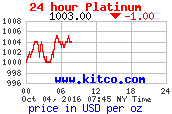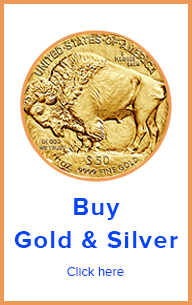Invest With Success: Precious Metals
For many people, the next logical step after they consolidate loans and work out a budget is to start investing. With the thousands of investment options available on the market today, however, many people find it difficult to build a properly diversified investment portfolio.
In general, a person should try to spread their money among a variety of investments. While the exact allocation of assets will depend on a variety of factors such as your age, income, total amount of money invested, and your risk tolerance. In addition to the standard recommendation for stocks, bonds, and cash, however, many people are starting to look into investing directly into commodities. Specifically, there has been a huge surge of interest in investing in precious metals.
Historically, precious metals such as gold, platinum, and silver have been a good way for investors to protect their accounts against inflation. This is because there is a limited supply of these metals. Because of this, these metals are typically believed to rise in value as governments and banks produce more currency.
Since an increase in currency production has historically been tied to a rise in inflation, precious metals are considered to be a good investment for anyone who wants their investment portfolios to rise along with inflation. Other investments, particularly cash and bonds, will typically decrease in value as inflation rises. The stock market has historically gone both up and down when inflation occurs.
Commodities are also seen as a stable investment. Because people who invest in commodities are typically buying a hard asset, such as a gold or silver coin or bar, many people believe that buying precious metals is safer than investing in complicated investments such as mutual funds or real estate investment trusts. Instead of putting money into something that few people understand, and that no one can actually pick up and touch, investing in precious metals means that an investor will actually own a physical object.
Of course, there are a few disadvantages to investing in precious metals. Like any commodity, gold, silver, and platinum are subject to sudden swings in their value. Historically, the value of these metals has risen or fallen nearly ninety percent or more several different times in the past several decades. While holding these investments for the long term has often been profitable, it is possible to lose everything by investing in precious metals.
It is important to note, however, that there are very few truly safe investments. That is, plenty of investment opportunities, including mutual funds, real estate, and corporate bonds, have the potential to completely lose their value. If a company goes bankrupt, everyone who holds shares of stock in that company now has nothing to show for their investment. It should be noted, however, that the market value of precious metals has never reached zero.
The fact that precious metals have never traded for nothing on the market means that an investor will be able to hold on to their investment while the price is down and wait for the price to come back up. Unlike other investments, gold, silver, and platinum will not become completely worthless.
Because of the advantages and risks of investing in precious metals, it is usually recommended that investors keep at least five but no more than twenty percent of their overall portfolio invested in precious metals. Keeping more than this amount of a portfolio in a single commodity is considered to be too risky for most individual investors.
If you are interested in adding precious metals to your investment portfolio, do a lot of research before making a purchase. There are many companies, banks, and investment firms that offer precious metals, and it makes sense for a potential investor to shop around and determine which product and price is right for them.


![[Most Recent Quotes from www.kitco.com]](http://www.kitconet.com/charts/metals/gold/t24_au_en_usoz_2.gif)
![[Most Recent Quotes from www.kitco.com]](http://www.kitconet.com/charts/metals/silver/t24_ag_en_usoz_2.gif)
![[Most Recent Quotes from www.kitco.com]](http://www.kitconet.com/charts/metals/platinum/t24_pt_en_usoz_2.gif)










